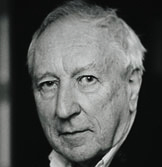Tomas Tranströmer Wins Nobel Literature Prize; Somewhere Philip Roth Weeps Quietly

Today Swedish poet Tomas Tranströmer received the 2011 Nobel Prize in Literature, becoming the first Swedish winner since 1974 and the first umlauted winner since Herta Müller in 2009. The citation mentions his “condensed, translucent images,” which allow readers “fresh access to reality.”
It’s a good choice, and one that Nobel watchers had been predicting for many years. Of course, there are sure to be critics, particularly American ones; since Swedish Academy member Horace Engdahl called American literature “too insular” in 2008, there will be those who accuse the Swedes of hypocritically picking their hometown boy. But Tranströmer is a poet with a broad international reputation—in fact he’s among the few foreign-language poets (Vera Pavlova is another) with an established following in English translation, even here in insular America. Robert Frost said that poetry is what evaporates from all translation, but something about the lucidity and idiosyncracy of Tranströmer’s images seems to carry well across linguistic boundaries.
That said, the man’s not exactly a household name, so I’m glad the prize will bring his work to an even larger audience. I’m familiar with only a scattering of his poems myself, but I’m always intrigued by the cryptic and ominous qualities of his work. I have a particular fascination with a poem called “Streets in Shanghai,” as translated by Samuel Charters. Unfortunately the full text is unavailable online, but here’s how it opens:
Many in the park are reading the white butterfly.
I love that cabbage butterfly as if it were a floating corner of truth itself!
At dawn the running crowds set our silent planet going.
The opening lines recall the deep simplicity of classical Chinese poetry, but the third line transports us suddenly to the teeming, globalized modern city. The poem is full of such evocative juxtapositions, and culminates in a vision of city dwellers bearing invisible crosses—a jarringly Christian image possibly inspired by Tranströmer’s fellow brooding Scandinavian, Kierkegaard. The complete poem can be found in Robert Hass’s anthology Now & Then (2008), and in a separate translation in Tranströmer’s The Great Enigma: New Collected Poems (2006).
Other samples of the new laureate’s work can be found at the Poetry Foundation and Academy of American Poetry websites, which will undoubtedly expand their exhibits in the coming weeks. Congratulations to Mr. Tranströmer, and condolences to Philip Roth and Bob Dylan, who had been pegged by some as Nobel favorites this year but who must now console themselves with their immense talent, wealth, and fame.
[Image of Tomas Tranströmer courtesy of the Nobel Prize Foundation website.]





